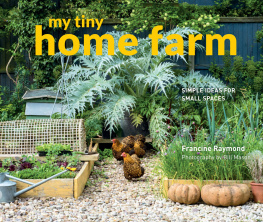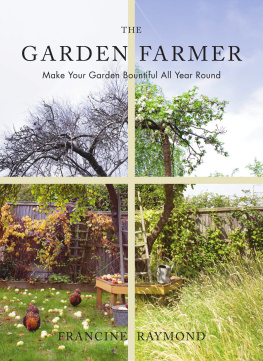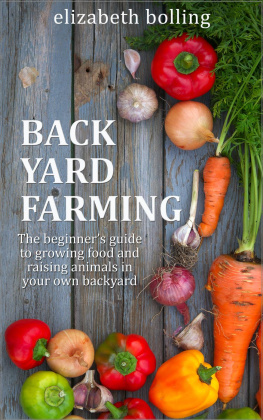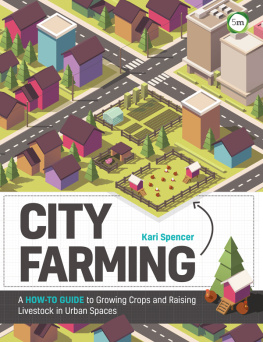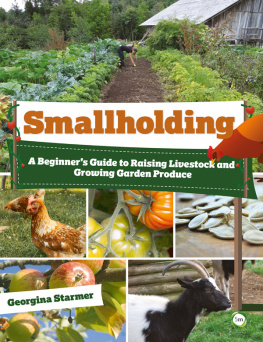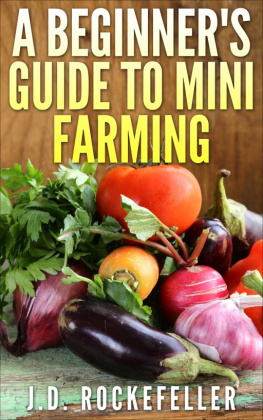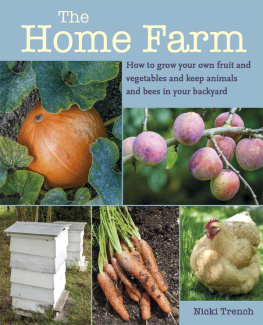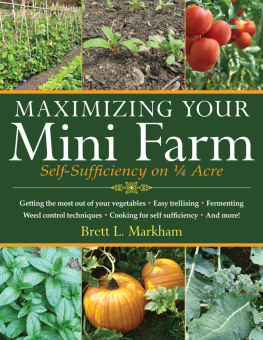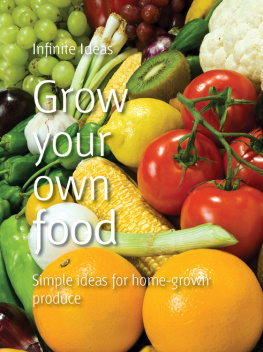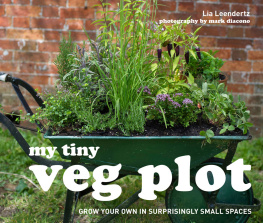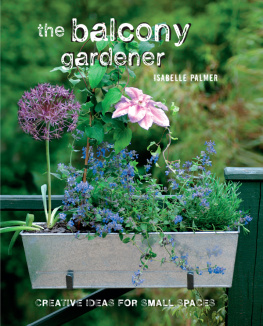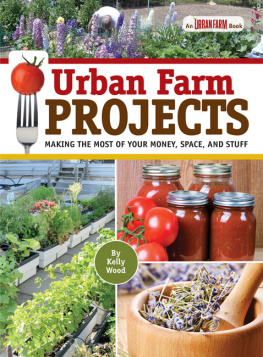



CONTENTS

INTRODUCTION
Smallholders come in all shapes and sizes. Some just grow fruit and veg and keep a few chickens and bees, while others go the whole hog. The luckiest get to maximize the symbiotic relationship between land and animals, producing wholesome food for their families by running mixed holdings where livestock grazes fertile land.
In an ideal world, we would all have access to healthy home-grown produce, and although most of us will never have space to grow a whole larder, we can all make our lives a little richer by planting a few seasonal delights, maybe offering a home to a couple of bantams, and making life easier for pollinating insects wherever we live.
With land at a premium, how can we start to enjoy the benefits of the good life? The answer is to buy from local markets and encourage local start-ups, to patronize cafs and restaurants that use ingredients grown nearby and to spread the green word whenever we can, especially to the next generation.
If you live somewhere with no outside space at all, seek out your local community garden and join in; find out if theres a community orchard nearby and volunteer. Youll share the harvests, enjoy the growing experience and make new friends. Even a spot of guerrilla gardening might give you a tiny plot, a verge or tree pit in which to grow fruit, veg and herbs.
If you have no time for regular commitment, try a farm holiday. Organizations such as Workaway offer experience on farms all over the world where youll have fun and learn at the same time. Seasonal fruit picking is an option, too. If you have cash to spare and want to put your feet up, stay in a hotel that trumpets its home-grown menu, home-raised meat and green credentials.
Allotments offer city-dwellers space to grow produce, and a few allow poultry and beekeeping too. Swedish koloni, German Schrebergrten, French jardins familiaux, Italian orti sociali, Dutch volkstuinen, Russian dachas and US community gardens all provide growers with plots at low rent, but there are usually long waiting lists and strict regulations often apply.
Those with balconies, backyards and flat roofs can grow surprising amounts of edible produce by maximizing space with containers, climbers and vertical gardens, though its important to remember to water and feed them regularly. Rooftop beekeeping is successful in cities all over the world, with bees foraging in parks and gardens within a 8km (5 mile) radius of their hives.
With a small front or back garden, the range of edible goodies you can grow increases mouth-wateringly. Trained fruit trees on a dwarf rootstock provide a delicious range of fruit, while raised beds and containers full of vegetables and herbs rotated with care and sown in succession will feed a small family on salads and other seasonal veg. If you have room for a compact greenhouse, or even just a cold frame, you can lengthen your growing season.
With a larger garden, poultry keeping becomes a possibility, provided Mr Urban Fox or other predators arent visitors. With all creatures, however, giving them enough space is of paramount importance since they wont thrive without it, so try bantams or call ducks and just keep a trio. An 0.4ha (1 acre) garden could be home to a couple of pigs, bought as weaners then grown to slaughter-size in autumn.
Animal welfare should be uppermost in the smallholders mind; if you are thinking of keeping stock of any kind you must go on a course first and learn exactly how to look after your animals. Wherever you live, keeping stock will be heavily regulated, for both the animals sake and the safety of the general public, so make sure you are aware of the legal hoops youll need to jump through.


If you are in the lucky position to be buying land for a mixed smallholding, then this is your wish list:
Ground that isnt wet, low-lying or prone to flooding.
Soil thats fertile with good grazing.
A nearby abattoir with a local vet who deals with your type of livestock.
Neighbours likely to be sympathetic to your farming plans.
Easy access for farm vehicles with no public rights of way.
Existing standpipes, farm buildings and fencing would be the cherry on the cake.
Sometimes a minus can be turned into a plus: wetland could grow watercress or be used for farming fish; a sandy, light soil could make a comfy home for pigs; and a south-facing slope might make an award-winning vineyard. But whatever you grow, the land needs to be weed- and pest-free and fertile.
After caring for your livestock, looking after your soil should be your next priority: improve it with your own compost and enrich it with your own fertilizer (green or animal manure), raising productivity and dealing with waste products. Provide habitat and food for wildlife, and the wildlife will help to control pest depredations and pollinate your crops.
Save cash by gathering seeds, building DIY structures and collecting firewood for fuel, and use your ingenuity to make the most of your crops at harvest time with tried and tested preserving techniques useful skills whatever the size of your plot. With surpluses, youll need marketing skills and an understanding of the health and safety regulations to sell your produce online or at farmers markets.
Ive loved getting to know the smallholders I visited in the making of this book, and I hope their experiences will help you to take the first steps to a more self-reliant, healthy and sustainable life, producing food that you and your family love to eat.
GROWING ALL OVER THE WORLD
The world is full of wonderful produce and we can all learn from one another. Changes in national diets have been introduced by pioneers and newcomers alike, from Francis Drake and his potatoes from the New World to holidaymakers bringing back souvenirs of wonderful meals and immigrant communities bringing their cuisines to their adopted homes.
Seed companies have responded to new tastes and the Internet makes it possible to buy internationally. Co-workers on allotments have influenced change in whats grown in veg plots and back gardens, and television programmes, cookery books and magazines publicize each fresh find. Developments in animal breeding and husbandry sometimes improve yields, while success in preserving ancient and rare breeds maintains useful traits for future generations.
So all the worlds ingredients can be on our home-grown menu all we need is the warmth of the sun (with maybe a little help under glass), fertile soil with adequate water, and the desire to try something new.

Next page
